What is the Timeline for Bankruptcy?
by Luke Homen
Once you decide to move forward with bankruptcy, your next concern is likely the timeline. When you’re finally ready to discharge your debt, you want it gone as quickly as possible. Consulting with a seasoned lawyer can provide clarity on the timeline for each type of bankruptcy, help navigate any complexities, and ensure your case progresses efficiently.
Pre-Meeting Preparation

After you’ve decided that bankruptcy is worth exploring, you’ll want to set up a consultation with a bankruptcy attorney of choice. They will also look at your financial situation, explain the process to you, and help you gather the necessary documentation. Sometimes bankruptcy might not be the right route for you — or it might not be right now — and the attorney will be able to advise you of your options.
Pre-Filing Preparation
After you’ve met with the attorney and decided you want to file for bankruptcy, the hardest part comes next — collecting all your financial documents, and paying for the bankruptcy. Every case is different, so you’ll need your attorney to advise you on the specific requirements for you.
Chapter 7 Bankruptcy Timeline
Once your bankruptcy lawyer has the financial documentation that they need to get started on your petition, they will handle assembling your Bankruptcy Petition, Schedules, and supporting documentation. These legal documents are approximately 70-75 pages long, so it’s typical for your attorney to need several weeks to prepare them. They are also filed under penalty of perjury, so attention to detail is key.
Upon signing the Petition, you can rest easy knowing your bankruptcy lawyer is filing on your behalf. This is when the Automatic Stay goes into effect.
The 341 meeting, also referred to as the “Meeting of Creditors,” takes place about 30 to 45 days after your case is filed. Historically, this took place in person at a federal courthouse, but now this occurs by phone conference call or Zoom meeting. Although creditors can attend this meeting, very few actually do. You and your trustee will go over your documentation and they will have ten specific financial questions for you.
Upon completion of this process, your bankruptcy is finalized and your qualifying debts are discharged. You’ll receive your discharge papers showing that your case is closed and your debts are discharged.
All in all, the Chapter 7 process takes about four to six months.
Chapter 13 Bankruptcy Timeline
The timeline for Chapter 13 bankruptcy is considerably different. It begins much the same way, with financial documentation submitted to the attorney, and a Petition to review, sign, and file. Your attorney will prepare a Chapter 13 Bankruptcy Plan, which is a repayment plan on your debts that is custom-designed for your financial situation.
You’ll submit your repayment plan to the court and begin making payments immediately, with your first payment due 30 days later. The court may request changes or approve the plan.
The 341 meeting usually happens between 30 and 45 days after you file for Chapter 13 bankruptcy. Similar to a Chapter 7 bankruptcy, this meeting involves the trustee asking financial questions and reviewing your documentation. Creditors may be present.
In most cases, the bankruptcy trustee will set another hearing date in your case, called a confirmation hearing, for the attorneys to report on case progress. In most instances, you won’t need to attend the confirmation hearings if you have an attorney.
The repayment plan may last between three and five years, depending on your income, your ability to repay, and the amount of debt you have. You will need to make all scheduled payments to remain compliant with your plan.
After you have fulfilled your repayment obligations, any remaining qualifying unsecured debts will be discharged. You will then receive your discharge papers showing that your case is closed and your debts are either paid or discharged.
Factors Affecting Timeline
There are numerous factors affecting how long your bankruptcy case takes. First, the complexity of your case may influence your timeline. If you have non-exempt assets, complicated debts, or other issues, your case could take significantly longer than a conventional open-and-shut bankruptcy case.
The court backlog is another factor that may come into play. During recessions and other times of economic difficulty, it is not uncommon for bankruptcy filings to surge. This can put significant pressure on the court, and what would usually take a month may take longer. However, the Automatic Stay remains in place during this time.
Your compliance with the court’s requirements can also affect how quickly your case is handled. If you forget to disclose debts, hide or fail to disclose assets, or hide income sources, the trustee will be much more careful with your case if it isn’t dismissed outright. When the court thinks you are being non-compliant, they will verify all documentation and paperwork you provide. Stay on top of all deadlines and provide clarifying documentation as quickly as possible when the court requests it.
Post-Bankruptcy Considerations
After your bankruptcy is granted, you have time to begin rebuilding your credit and preparing for a more positive financial future. You may rebuild your credit by using it sparingly and paying your debts off in full every single month. It’s also important to watch out for warning signs that you may be getting into more debt that you can manage.
You should monitor your credit report for at least a year after filing for bankruptcy. You’ll want to ensure that all qualifying debts fall off; if they do not, you can dispute the listed amounts and have them corrected.
This is also an excellent time to brush up on your budgeting and saving strategies so you have a solid financial future. Focus on rebuilding your savings, sticking to a realistic budget, and avoiding excessive use of credit.
Finding the right Oklahoma bankruptcy attorney for your case can help you move through this process as smoothly as possible. Set up a time to talk to the team at Convenient Bankruptcy. We’re just a phone call away at 405-296-0069, and you can also request a consultation online.

Attorney Luke Homen is the President of Convenient Bankruptcy. He placed great value on helping individuals and families solve their financial challenges and achieve real financial freedom. His goal is to find a customized solution that fits each client’s unique situation. Luke has been practicing law since 2008, and was voted “Best Bankruptcy Attorney in Oklahoma” by The Oklahoman in the Reader’s Choice Awards.
